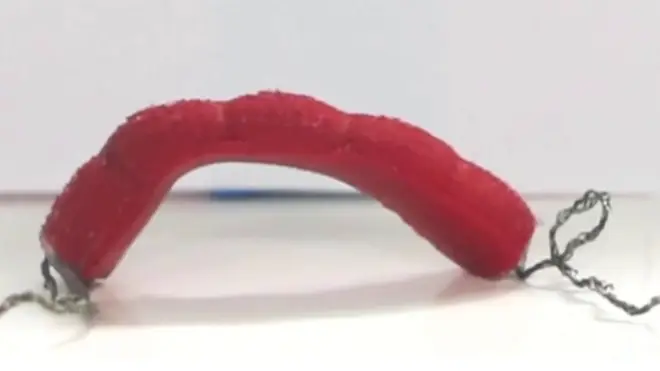
Nick Ferrari 7am - 10am
6 September 2021, 11:54

The ‘roboworms’ can squeeze into tight spots that normal rigid robots cannot reach.
Scientists have developed stretchy wormlike robots inspired by the movements of worms which could be used in the fields of industry and prosthetics.
A team of engineers from the University of Glasgow say the “roboworms” can stretch up to nine times their own length and are capable of a form of proprioception – the method by which biological organisms like worms perceive their position in space.
This allows the robot worms to squeeze into tight spots that rigid robots cannot reach.
The researchers hope that the invention could lead to a new generation of robots capable of autonomously exploring difficult-to-reach places which could be used in areas such as mining and construction, or disaster relief to search for survivors trapped in rubble.
The technology could also be used to develop more lifelike prosthetics, or equip robots with the ability to wrap around and lift irregularly-shaped heavy objects.
The way the robots move was inspired by the movements of inchworms and earthworms.
Professor Ravinder Dahiya, of the University of Glasgow’s James Watt School of Engineering, leads the Bendable Electronics and Sensing Technologies (Best) group, which developed the system.
He said: “Proprioception is a vital characteristic of many forms of biological life, and scientists have long been inspired to try and develop engineered systems which mimic this ability.
“Our bioinspired robots are a step towards creating soft, flexible robot systems capable of the infinite directions of movement that nature has created in inchworms and earthworms.
“The ability of soft robots like these to adapt to their surroundings through seamlessly embedded stretchable sensors could help autonomous robots more effectively navigate through even the most challenging environments.”
The wormlike robots have intrinsic strain sensors and are covered in “skin” made from a form of stretchy plastic called Ecoflex and a graphite paste developed by the team.
Stimulus-responsive soft robots, with biological organs like intrinsic sensing can bring transformative advances in soft robotics and their applications in medical field, agriculture, aquaculture, underwater robotics etc. Nice work @BEST_UofG https://t.co/ir1Rzsumro
— Ravinder S. Dahiya (@RavinderSDahiya) September 6, 2021
Tiny permanent magnets attached at either end of the robots’ tubular bodies help them to move along a metal surface.
The sensors in their skin help them “sense” their movements in relation to their bodies by measuring the electrical resistance of the graphite paste, which changes as the robots’ bodies expand.
When the resistance reaches a pre-set maximum value, the body contracts again, moving it forward.
The team’s paper, titled Bioinspired Inchworm And Earthworm Like Soft Robots With Intrinsic Strain Sensing, is published in Advanced Intelligent Systems.
The research was supported by funding from the Engineering and Physical Sciences Research Council (EPSRC) and the European Commission.